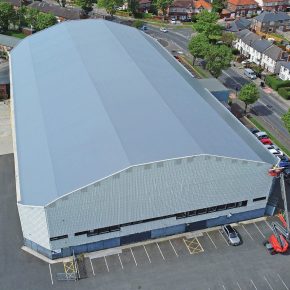
Archaeological conservation the pitfalls and good practice
Experts work closely with specialist architects and archaeological conservationists at organisations such as English Heritage and the National Trust, as well as museum trusts, local authorities and dioceses, to ensure buildings are preserved in their natural state for future generations to enjoy. Restoration and conservation projects can include anything from high level repairs and general maintenance to complex stained glass window and weather damage repairs. But how does the process of preservation work? And what are the pitfalls and safety aspects to consider?
Before any work gets underway, there always has to be a period of thorough consultation, identifying the projects demands and then strategically planning its execution
What to look for when acquiring preservation services
Its sad to say that those with exceptional experience and the relevant accreditations within the conservation sector are dwindling. The industry is crying out for apprentices. Thats why its important that, when selecting a contractor to work on a project, they have relevant past experience.
In addition, seek out a business with the necessary accreditations, which can include the likes of the Stone Federation of Great Britain, one of the conservation industrys leading accreditation bodies and the national trade association for the natural stone industry. There are also accreditation bodies such as the Association of Technical Lightning and Access Specialists (ATLAS), Lightning Conductor Engineers, the Steeplejack Training Group Association, the CITB and the Federation of Master Builders (FMB) each of whom set the highest compliance standards which all members must adhere to.
Conservation and preservation projects vary greatly and can include everything from a full masonry repair to lightning protection installation, architectural surveys and general maintenance. Its advisable to seek out a contractor that can offer you a full service and not just one aspect. The benefits of this are two-fold firstly, if any other damage is found and requires rapid repair, this can be easily completed. Secondly, in the long-run, it is usually a lot more cost-effective.
Finally, when looking to engage a contractor to carry out any conservation repairs or maintenance, ask to see its past projects and perhaps even client testimonials. After all, we are all only as good as our last job.
Building relationships working with archaeological conservationists
Before any work gets underway, there always has to be a period of thorough consultation, identifying the projects demands and then strategically planning its execution. At this stage, your contractor should be able to detail the estimated duration of the project, the full costs, any extras that may occur and any potential disruption to the operation of the building or structure, especially if it is a public building.
The contractor will then develop an action plan with regards to surveillance in areas of significant importance such as historical substrates and structures which need to be carefully logged and protected during the works. Detailed plans will at this stage be submitted to make sure the area of historical value is preserved exactly. A conservation plan is then developed to this effect.
Carrying out preservation works the process of preservation
Safety should always be of paramount concern and your contractor will look to advise on using protective barriers, debris netting and cradle access platforms
Once the project requirements are identified, execution can begin, during which there is always on-going consultation and the necessity to be aware of any potential new instructions during, and possibly after, the work has been completed. Other obstacles that may occur and are worth being aware of are instances related to bad weather especially when working at height.
This article originally appeared in the ABC+D magazine. Click here if you would like to find out more about ABC+D
At this point a contractor will have all the necessary health and safety requirements in place and will have advised of any possible disruption. These days, an experienced company should be able to limit disruption to a businesss operations by using non-invasive methods such as harnesses, pontoons (in the case of historic bridge repairs, for example) and rope access solutions, rather than obtrusive scaffolds. In addition, many restoration projects can and should be carried out by hand without the use of heavy machinery which can be damaging.
Safety should always be of paramount concern and your contractor will look to advise on using protective barriers, debris netting and cradle access platforms all of which they will provide.
The site will then be accessed using the best solutions to suit the environment and its surroundings. The HSE process of hierarchy is looked into using a strict risk assessment developed with restrictions such as uneven ground, adjacent buildings, trees in conservation zones, listed status, public access etc, in mind. Always consider the ease of which sensitive works can be carried out in line with health and safety protocols as well.
Upon completion of a project, the contractor will start cataloguing the works these days often using an online app to speed up the process. It is always vital, upon project completion, that you receive the recording of the final details and the relevant documentation for your records.
Latest news

22nd April 2024
New EJOT role will develop strategic support for UK flat roofing sector
EJOT UK has taken a major step in the expansion of its support for the flat roofing market by appointing one of its most experienced building envelope fastening specialists as its first sector-dedicated business development manager.
Posted in Articles, Building Industry News, Building Products & Structures, Building Systems, Innovations & New Products, Posts, Recruitment, Restoration & Refurbishment, Retrofit & Renovation, Roofs
22nd April 2024
Access2 Wins ADSA-Sponsored Award at AI Specification Awards
Access2 clinched the ADSA-sponsored Product Design and Innovation Award (Electronic) at the AI Specification Awards 2024 on Thursday.
Posted in Access Control & Door Entry Systems, Architectural Ironmongery, Articles, Awards, Building Associations & Institutes, Building Industry Events, Building Industry News, Building Products & Structures, Building Services, Doors, Facility Management & Building Services, Information Technology, Innovations & New Products, Retrofit & Renovation, Security and Fire Protection, Video of the Week
19th April 2024
ASSA ABLOY: Access solutions can impact sustainability performance across the full life-cycle of a building
Embedding sustainability within any organisation requires a broad, strategic perspective. Scrutiny should include the physical infrastructure itself: According to the IEA, buildings consume around 30% of global energy*. ASSA ABLOY has more…
Posted in Access Control & Door Entry Systems, Architectural Ironmongery, Articles, Building Industry News, Building Products & Structures, Building Regulations & Accreditations, Building Services, Case Studies, Doors, Facility Management & Building Services, Information Technology, Research & Materials Testing, Retrofit & Renovation, Security and Fire Protection, Sustainability & Energy Efficiency, Video of the Week
19th April 2024
British weather doesn't dampen spirit for new HMG Garden Paint
Despite one of the wettest starts to the year on record, customers are starting to plan for brighter days with HydroPro Garden Paint from HMG Paints.
Posted in Articles, Building Industry News, Building Products & Structures, Garden, Innovations & New Products, Paints, Paints, Coatings & Finishes, Restoration & Refurbishment, Retrofit & Renovation, Site Preparation, Sustainability & Energy Efficiency, Waste Management & Recycling
 Sign up:
Sign up: